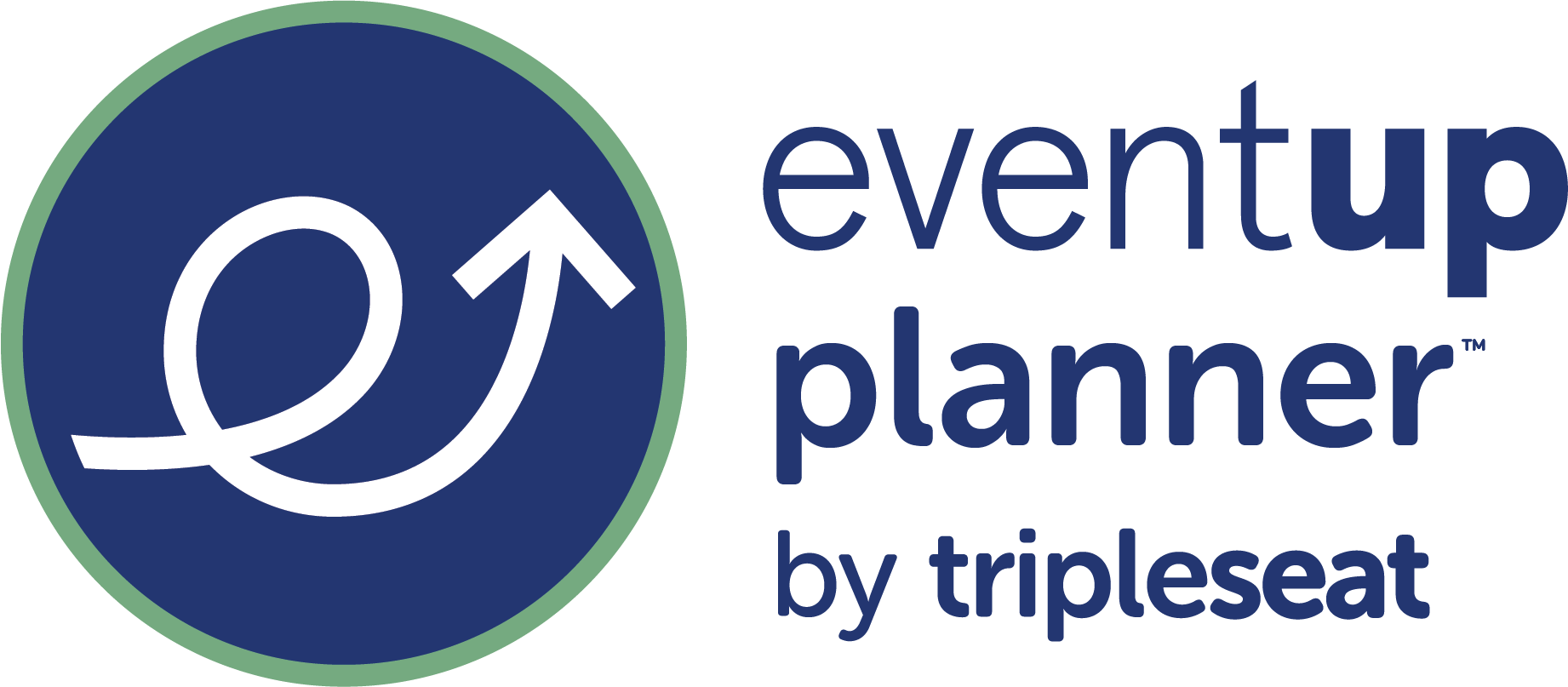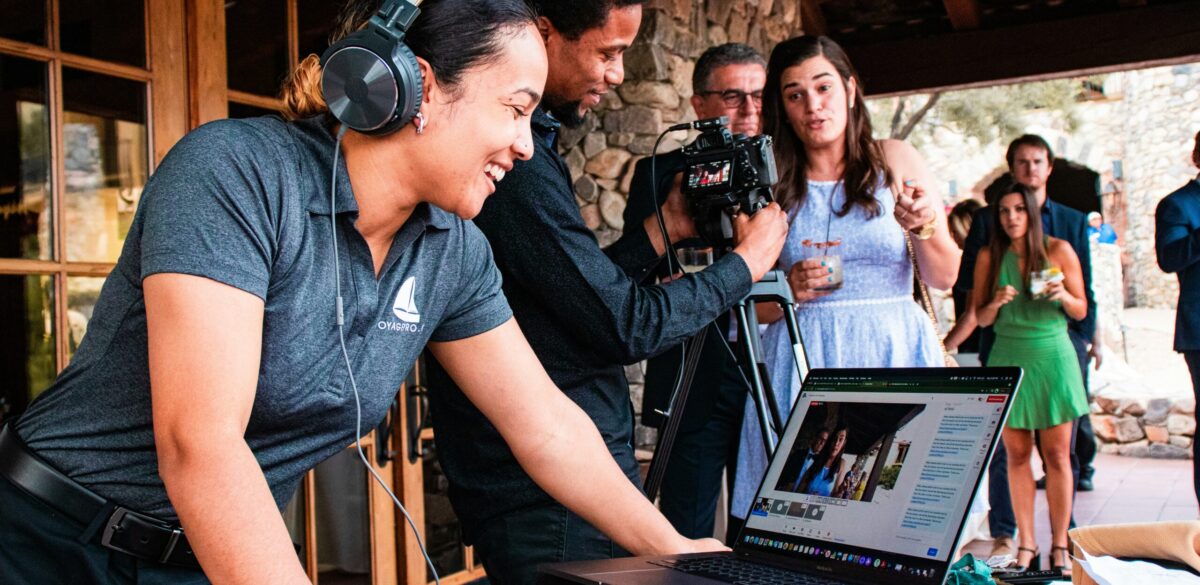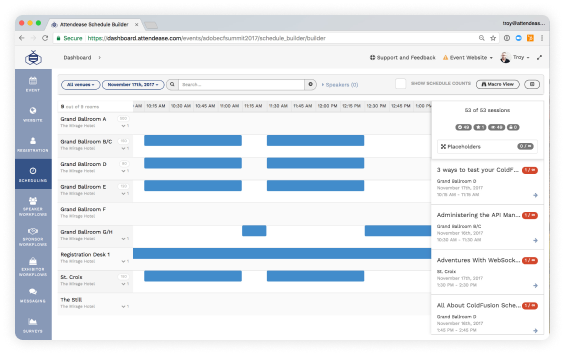What does 2025 hold for the events industry?
Thanks to rapid innovation and the global sharing of ideas entrenched in technology, event managers and planners have started experimenting with new methods and ideas in order to create the perfect blueprint for their events.
At the same time, the core of what makes a successful event remains the same: events are about the experience, from start to finish (and beyond). People want to feel connected, they want to be entertained, and they want valuable content to take away with them.
Let’s take a look at the top event trends that will shape 2025!
CHECK OUT: 9 Key Factors for Choosing Event Management Software
10 Event Planning Trends to Follow in 2025
Let’s explore the top event planning trends not to miss this year:
- Trend #1 – First-party data from events
With the demise of third-party cookies, first-party data captured at events has become marketing gold. ✨
This data allows planners to intimately understand their audiences’ interests, preferences, and behaviors. In turn, this intelligence helps them better personalize and improve the event experience.
For instance, capturing attendee data at registration, sessions, networking events, etc. provides a wealth of valuable insights. Details like job title, industry, areas of interest, and engagement levels are extremely useful for segmentation and future event planning!
Plus, real-time data collection at live events helps planners to be nimble and pivot things like session topics, amenities offered, or scheduling based on active feedback and observed behaviors.
Moreover, as data privacy regulations tighten, event data collected with consent is critical for compliant marketing practices. We’ll continue to see this conversation evolve in 2025.
- Trend #2- Activity-based or experiential events
Pickleball and axe-throwing are no longer just for breweries! In 2025, we’ll continue to see more activity-based events.
Audiences don’t just want to sit back and watch but will instead seek ways to interact with the event. Planners are likely to push for more engaging, participatory events. Among the many that make a lasting impression are workshops, practical exercises, and multisensory events.
Games, contests, live music, and shows are a great way to get attendees engaged in and excited about the event.
So whether it’s intimate private concerts or corporate volleyball games, expect to see more activities on the itineraries of events this year. 👍
- Trend #3 – Artificial intelligence (AI) technology
As we approach 2025, AI is poised to transform the events industry in several exciting ways. Here are some of the biggest trends industry professionals should be watching:
✅ Personalization at scale
AI-powered recommendation engines and chatbots will allow event planners to deliver hyper-personalized experiences to each attendee based on their preferences, interests, and real-time feedback. From tailored content suggestions to customized networking matches and exhibitor recommendations, AI makes true personalization scalable!
✅ Data-driven enhancements
Machine learning models can analyze volumes of first-party data from past events to automatically surface insights and predictions that improve planning and execution. This ranges from optimizing event logistics (like venues and F&B) to identifying new revenue opportunities and more.
✅ Automated administrative tasks
AI can handle many time-consuming administrative tasks like registration, scheduling, and matchmaking. This allows planners to focus more on strategy and creative execution.
When used correctly, AI will continue to help planners and organizers save time and resources in 2025.
- Trend #4 – Different themes for different rooms
Every event needs a theme, but in 2025, the event industry is taking themes to a whole new level.
For larger events or events of any size involving multiple rooms, a new trend in event management is creating a different theme for each room. Giving each room its own unique theme or vibe is an innovative way to curate a truly unforgettable experience for attendees.
We expect to see a rise in choose-your-own-adventure style event themes in the coming year.
READ MORE: Corporate Event Themes: 45+ to Choose From
- Trend #5 – Personalization across the entire event experience
Personalization is key to event success—and in today’s world of data-driven insights, advanced technology, and artificial intelligence, event managers and planners can offer personalization across the entire event experience.
Customizing each attendee’s experience so that it feels like the event was tailored to their specific needs can increase satisfaction as well as the likelihood they will attend an event in the future. From branded floor decals to personalized post-event email messages, creating a unique, tailored experience for guests leads to maximized results.
Event personalization is highly likely to continue impacting meetings and events in 2025.
- Trend #6 – Advanced event technology
Event technology platforms continue to advance, and we’ll see these new platforms and upgraded data-based technology used in events across industries this year.
With advances in data collection and analysis, event technology can accomplish anything from tailoring attendee experiences to automating routine event planning tasks.
By investing in event tech that collects and reports on more data, event managers can streamline the event planning experience as well as make the experience more enjoyable for attendees!
WORTH READING: Is Event Software Worth It? How to Get Leadership Buy-In
- Trend #7 – Diversity, equity, & inclusion
Diversity, equity, and inclusion (DE&I) initiatives will continue to be crucial for successful events in 2025.
The future of event planning is set to embrace cultural richness and diversity by leaps and bounds. Recent years have seen a shift toward a greater emphasis on diversity and inclusion on the part of event planners.
This commitment means showcasing a wide spectrum of speakers, selecting locations that are gender-neutral and accessible, and streamlining entry requirements for all. It will make events more inclusive and interesting for a broader range of people and better reflect the rich diversity of our global society.
By prioritizing DE&I in the coming year (and beyond), event industry professionals can ensure that attendees from various walks of life are welcomed, catered to, and engaged.
- Trend #8 – Accessibility for all
Accessibility is more than a trend—it’s a requirement. Fortunately, in the last year, we’ve seen more and more event managers, venues, and planners center accessibility, and we expect to see the trend continue in 2025.
Whether it’s providing automatic closed captioning on speaker stages, creating sensory areas for attendees to take a break, hiring sign language interpreters, or ensuring venues exceed accessibility expectations, we will continue to see improvements in this area that create better event experiences for everyone.
GO DEEPER: Digital Accessibility in Event Planning: Common Pitfalls & Best Practices
- Trend #9 – Sustainability as a foundation
In 2025, sustainability remains a top priority for event planners, managers, and attendees. Across industries, people expect sustainable and eco-friendly practices, materials, and initiatives to be the foundation of events and meetings.
To meet the demand for sustainable events, the events industry has made huge leaps toward environmental consciousness. From making venues more sustainable and reducing waste to offering plant-based menus and using recyclable materials, the events industry will keep the spotlight on sustainability.
- Trend #10 – Immersive technologies & experiences
Immersive technologies like augmented reality (AR) and virtual reality (VR) make it possible to transform how attendees, speakers, exhibitors, and guests experience events.
With the ability to create interactive 3D environments, virtual site visits, and product demos, AR and VR have the potential to greatly impact events both online and in person.
With AR technology, attendees can take 3D tours, view interactive layouts and maps, participate in scavenger hunts, and more. VR technology reveals an entirely new virtual world where guests can interact and engage with presentations, booths, and each other.
We expect to see new, exciting, and fun immersive technologies influence events in 2025 and beyond.
Use EventUp Planner to Work Smarter in 2025 and Beyond
If you’re looking for an event planning partner, turn to EventUp Planner.
EventUp Planner is one of the leading names in the field of all-in-one event management software.
Offering all the key features needed to stay relevant in 2025, EventUp Planner provides event managers and planners with an intuitive, seamless, and convenient digital experience that goes hand-in-hand with live, virtual, and hybrid events! Learn more about how EventUp Planner’s complete event management software and automation platform can help you plan your next event.










